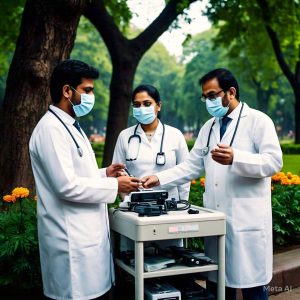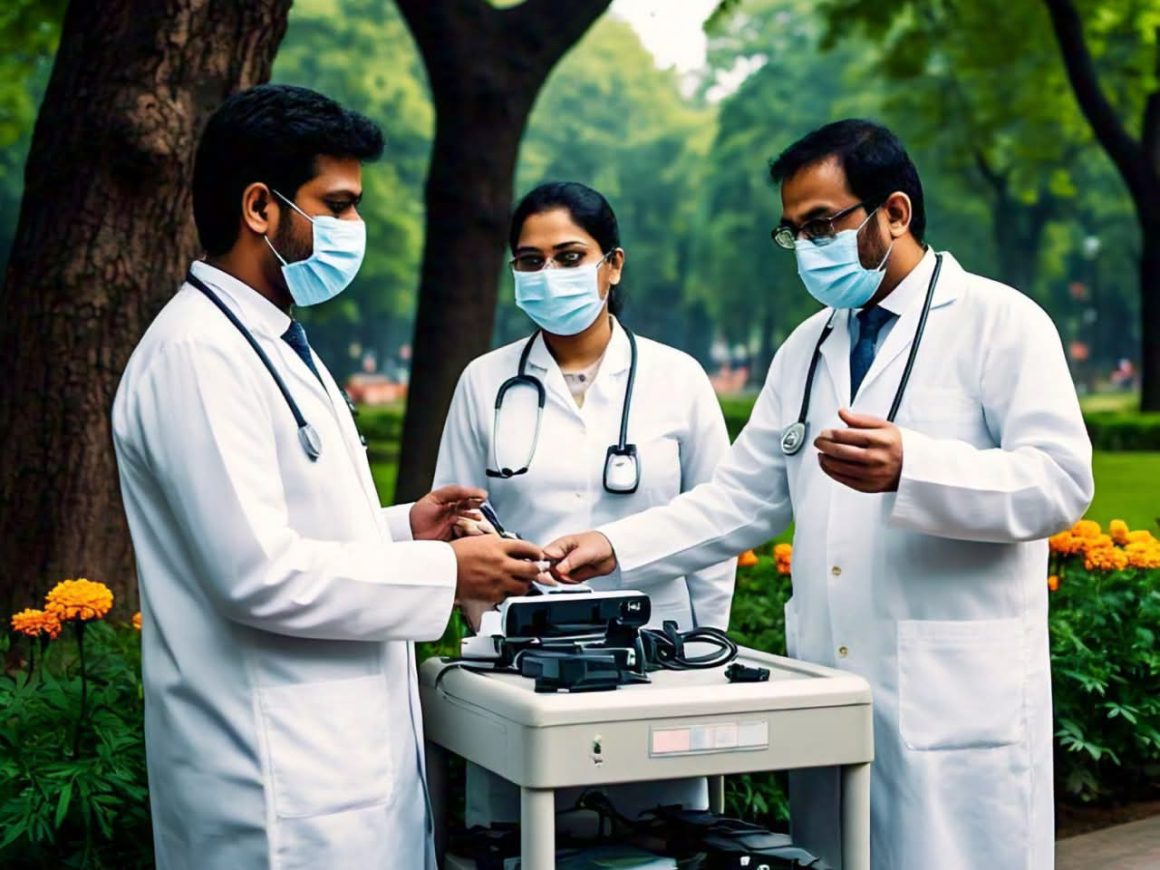
In recent years, the demand for medical radiographers in India has risen significantly, driven by the rapid expansion of the healthcare industry and advancements in diagnostic imaging technologies. As healthcare infrastructure improves across the country, the need for skilled professionals to perform diagnostic imaging and radiological procedures has never been greater. This article explores why medical radiographers are in high demand in India, the skills required to excel in this field, career opportunities, and the steps to becoming a radiographer.
Understanding the Role of Medical Radiographers
Medical radiographers, also known as radiologic technologists, are essential healthcare professionals who operate imaging equipment to diagnose and monitor various medical conditions. They specialize in using advanced technologies such as X-rays, MRI (Magnetic Resonance Imaging), CT (Computed Tomography) scans, and ultrasound to assist doctors in accurate diagnosis and treatment planning.
Radiographers work closely with physicians and other healthcare providers, ensuring that diagnostic procedures are conducted safely and efficiently. They play a critical role in patient care, offering not just technical expertise but also comfort and reassurance to patients undergoing these tests.
The Growing Need for Radiographers in India
India’s healthcare sector is one of the fastest-growing industries, and with it comes an increasing demand for medical radiographers. Several factors contribute to this trend:
1.Expanding Healthcare Infrastructure
The Indian government and private sectors have invested heavily in healthcare infrastructure, leading to the establishment of new hospitals, diagnostic centers, and clinics across urban and rural areas. These facilities require qualified radiographers to manage diagnostic imaging equipment and provide timely results.
2.Rising Incidence of Chronic Diseases
The prevalence of chronic diseases such as cancer, cardiovascular conditions, and orthopedic issues has increased. Diagnostic imaging plays a vital role in early detection and management, making radiographers indispensable in modern healthcare.
3.Advancements in Imaging Technology
The adoption of cutting-edge technologies like digital radiography, 3D imaging, and AI-assisted diagnostics has created a demand for skilled professionals who can operate these advanced machines effectively.
4.Shortage of Trained Professionals
Despite the growing need, India faces a shortage of trained medical radiographers. Many healthcare facilities struggle to find qualified candidates to fill these critical roles, highlighting the urgent need for more professionals in this field.
Skills and Qualifications for Aspiring Radiographers
To meet the growing demand for medical radiographers in India, aspiring professionals must possess specific skills and qualifications:
1.Educational Requirements
•A Bachelor’s degree in Radiography or Medical Imaging Technology is typically required.
•Diploma programs in Radiology or allied fields are also available for those seeking shorter courses.
•Advanced certifications in specialized imaging techniques such as MRI or CT scans can enhance career prospects.
2.Technical Proficiency
Radiographers must have a thorough understanding of imaging equipment and software. They should be capable of calibrating and troubleshooting machines to ensure optimal performance.
3.Attention to Detail
Accurate imaging is crucial for proper diagnosis. Radiographers must be detail-oriented to capture high-quality images and identify abnormalities.
4.Patient Care Skills
Since radiographers interact directly with patients, excellent communication and interpersonal skills are essential. They must ensure patients feel comfortable during procedures.
5.Regulatory Compliance
Knowledge of radiation safety protocols and adherence to regulatory standards is critical to protecting both patients and healthcare staff.

Career Opportunities for Radiographers in India
The career prospects for medical radiographers in India are vast and varied. Here are some of the key opportunities:
1.Hospitals and Clinics
Most radiographers work in hospitals, operating diagnostic imaging equipment for inpatients and outpatients. Multispecialty hospitals offer exposure to a wide range of cases, enhancing professional experience.
2.Diagnostic Imaging Centers
Independent diagnostic centers specialize in imaging services, providing opportunities for radiographers to work in a focused environment with advanced technologies.
3.Educational Institutions
Radiographers with significant experience can transition into academic roles, teaching and training the next generation of radiologic technologists.
4.Research and Development
With the growth of medical technology, radiographers can contribute to research in imaging techniques and technologies, collaborating with scientists and engineers.
5.Government and Public Health Services
Government initiatives to improve healthcare access in rural and underserved areas have created opportunities for radiographers to work in public health settings.
6.International Opportunities
Indian radiographers with recognized qualifications can explore global career opportunities, as the demand for skilled professionals extends beyond national borders.
How to Become a Medical Radiographer in India
1.Choose the Right Educational Path
Aspiring radiographers can begin their journey by enrolling in a Bachelor’s degree program in Radiography or Medical Imaging Technology. Some institutions also offer diploma courses for quicker entry into the field.
2.Gain Clinical Experience
Practical training during internships or clinical rotations is vital for developing hands-on skills in operating imaging equipment and handling patients.
3.Pursue Advanced Certifications
Specialized certifications in modalities like MRI, CT, or interventional radiology can boost employability and open doors to advanced roles.
4.Stay Updated with Industry Trends
The field of medical imaging is constantly evolving. Radiographers should stay updated on the latest advancements through continuing education and professional development.
5.Obtain Licenses and Registrations
Some states and institutions may require radiographers to obtain licenses or register with professional bodies to practice legally.
The Role of Government and Private Sector Initiatives
Addressing the demand for medical radiographers in India requires a collaborative effort between the government, educational institutions, and the private sector. Initiatives to establish more radiography training programs, provide scholarships, and create awareness about the profession can encourage more students to pursue this career.
The government’s focus on strengthening healthcare in rural areas presents an opportunity to train and deploy radiographers where they are needed the most. Similarly, private sector investments in diagnostic technology and infrastructure can create new job opportunities for skilled professionals.
Conclusion
The increasing demand for medical radiographers in India highlights the critical role they play in modern healthcare. As diagnostic imaging continues to be a cornerstone of effective medical care, the need for skilled radiographers will only grow.
For aspiring healthcare professionals, a career in radiography offers a unique combination of technical expertise, patient interaction, and job satisfaction. By choosing this field, individuals can contribute to improving healthcare outcomes and make a meaningful impact on patients’ lives.
If you’re considering a career in healthcare, now is the perfect time to explore opportunities in medical radiography. With the right education, skills, and determination, you can embark on a rewarding journey in one of India’s most in-demand professions.






